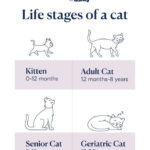Settlers of Catan, the beloved board game, has successfully transitioned to the digital realm, offering fans the chance to strategize and trade online. My own experience, playing Online Settlers Of Catan during lockdown alongside trying out the much-hyped Arc Browser, highlighted a crucial lesson for product development: user value often outweighs perfect usability when it comes to product adoption. While a seamless user experience is always desirable, solving a real problem for users is the key to making them embrace your product, even if it’s a little rough around the edges.
Our group of friends, scattered geographically even before the 2020 pandemic, regularly bonded over in-person games of Catan. When lockdowns hit, the digital version of Settlers of Catan became our lifeline for Friday night gatherings. However, let’s be honest, the official Settlers of Catan app wasn’t exactly a masterpiece of user interface design. Take, for instance, the hilariously counter-intuitive “I am not ready” button to start a game. Clicking it changed the text to “I am ready,” causing initial confusion that morphed into an ongoing joke – our games now begin with a chorus of “I am not ready!”
Trading, a core mechanic of Catan, was equally perplexing in the online version. The interface made it difficult to decipher the direction of trades. Beyond UI quirks, server instability was a frequent frustration, and the lack of an “undo” button was painful. An accidental misclick could cost you the game – I speak from experience, having once deployed a road instead of a crucial ship. Despite these usability nightmares, we persisted. Week after week, we endured the clunky interface and technical hiccups, drawn back by the fundamental enjoyment and social connection the game offered.
Contrast this with my experience onboarding to Arc Browser, the touted “browser of the future” for Mac users, and now available on Windows. Heard praises from sources like Lenny’s Podcast and tech-savvy colleagues, I, a product manager by profession, was eager to try it out upon its Windows launch. The initial encounter, however, left me surprisingly cold. The realization dawned that migrating from Chrome to Arc Browser would demand a significant time investment. Years of Chrome usage had sculpted a personalized system of profiles, extensions, shortcuts, and bookmarks, synced across devices. Chrome, for me, wasn’t broken. And in those initial hours with Arc, despite its sleek design and novel features, it didn’t feel sufficiently superior to justify the migration effort. It was a polished product, seemingly user-friendly, but it didn’t address a pain point I was acutely feeling.
This comparison brings forth three key lessons, particularly relevant for product developers aiming for user adoption.
1. User Value Often Overrides Usability Hurdles
In product development, two primary risks loom large: user value risk and usability risk. User value risk questions whether the product truly offers any benefit to users. Usability risk concerns whether users can effectively utilize the product to achieve their desired outcome.
Arc Browser undoubtedly excels in usability and onboarding, and many users are ardent advocates. While a great user experience is always a plus, in my case, Arc Browser simply didn’t deliver enough value to compel me to switch. Settlers of Catan online, on the other hand, was riddled with usability issues. Yet, our desire to play Catan and connect socially was so strong that we collectively navigated the frustrating interface and technical glitches.
Many users are surprisingly tolerant of a less-than-perfect user interface if the product offers significant value. Conversely, a flawlessly designed product is likely to gather dust if it doesn’t solve a real problem or fulfill a genuine need. Marty Cagan’s insightful post, “Focus on Value,” further emphasizes this crucial distinction.
2. Solve a Tangible Problem for Your Target Audience
Bob Moesta, co-creator of the Jobs to be Done framework, eloquently describes the forces influencing user decisions to switch products in Lenny’s Podcast. He outlines four forces at play:
- F1. Push of the situation: Dissatisfaction with the current solution.
- F2. Pull of the new idea: Perceived benefits of a new solution.
- F3. Anxiety of new solution: Concerns about the switch itself.
- F4. Allegiance to current behavior: Inertia and switching costs associated with existing habits.
Moesta’s framework highlights that a switch occurs when (F1 + F2) > (F3 + F4). If (F1 + F2) ≤ (F3 + F4), users tend to stick with the status quo, reasoning, “What I’m currently doing works well enough.”
In the Arc Browser scenario, my existing Chrome setup worked perfectly well. There was minimal “push” to seek an alternative. My long-standing Chrome usage and customized setup further reinforced inertia (F4). Conversely, with Settlers of Catan online, the pandemic-induced lockdown created a significant “push” (F1). Our inability to play in person eliminated the existing solution, leaving us searching for alternatives. The online game, despite its flaws, offered a crucial solution to our problem of social connection and Catan enjoyment during isolation.
Solving a genuine problem is paramount. Many users won’t even consider a new product unless they experience palpable pain points with their current situation.
3. People Naturally Resist Change
The online gaming world is saturated with multiplayer options. So, why did we, as a group, stubbornly persevere with the buggy online Settlers of Catan for years instead of exploring other, potentially smoother, online games?
Douglas Adams, in The Hitchhiker’s Guide to the Galaxy, humorously suggested that resistance to change intensifies around the age of 35. As a group of time-constrained individuals in our mid-thirties, the prospect of learning a new game, coordinating a group switch, and abandoning our established Catan routine felt… unappealing.
This reluctance to change is captured by forces F3 and F4 in Moesta’s framework. Many users experience anxiety about the unfamiliar. “Better the devil you know,” as the saying goes. Established habits are deeply ingrained. Marketers often target consumers during periods of significant life changes, like moving or starting university, as these moments disrupt existing habits and create openness to new products and routines.
Switching costs are amplified in group settings, presenting a collective action problem. Changing browsers is an individual decision. Convincing six friends to collectively adopt a new online game involves significantly higher coordination and inertia to overcome. In our case, the established value of Catan and the social ritual it represented outweighed the frustrations of the clunky online implementation, at least until a better solution presented itself.


